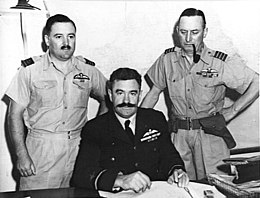Northern Area Command (RAAF)
Headquartered at Townsville, Queensland, Northern Area Command was responsible for air defence, aerial reconnaissance and protection of the sea lanes within its boundaries.
In January 1942, following the outbreak of the Pacific War, it was divided into North-Western and North-Eastern Area Commands, to counter Japanese threats to northern Australia and Papua, respectively.
Prior to World War II, the Royal Australian Air Force was small enough for all its elements to be directly controlled by RAAF Headquarters in Melbourne.
[5] Between June and November 1941, Northern Area took the lead in tracking Japanese pearl luggers, whose increased presence off north-western Australia was regarded as "significant" by intelligence services.
2, 11, 13, 20 and 24 Squadrons undertook reconnaissance, maritime patrol and sporadic bombing missions against Japanese targets in the Dutch East Indies and Torres Strait.
[11] Short of modern fighters and sufficient numbers of bombers, the RAAF units were, according to the official history of Australia in the war, "virtually powerless" to either attack or defend against Japanese forces building up in the region.
[4][14] North-Western Area Command was headquartered at Darwin, Northern Territory; its inaugural AOC was Air Commodore Douglas Wilson.


